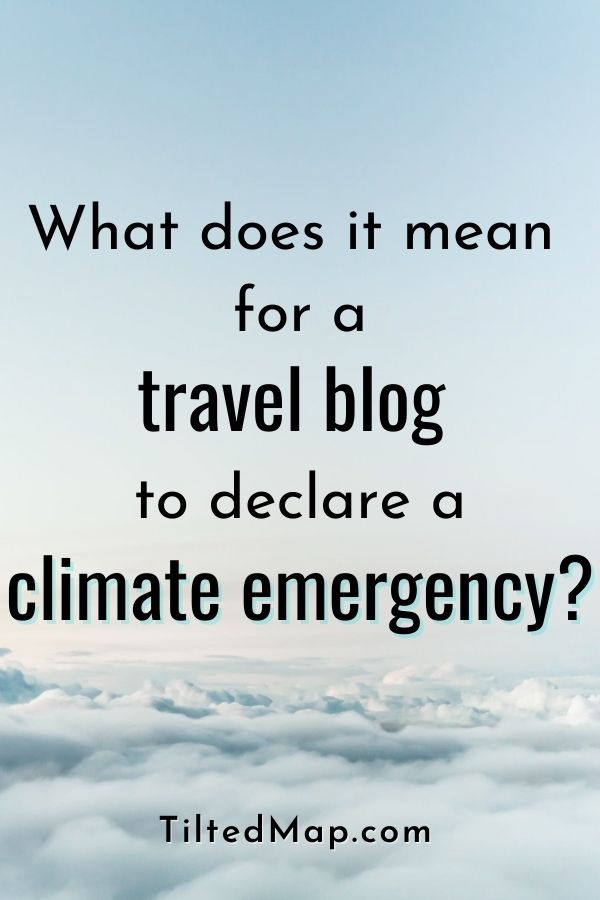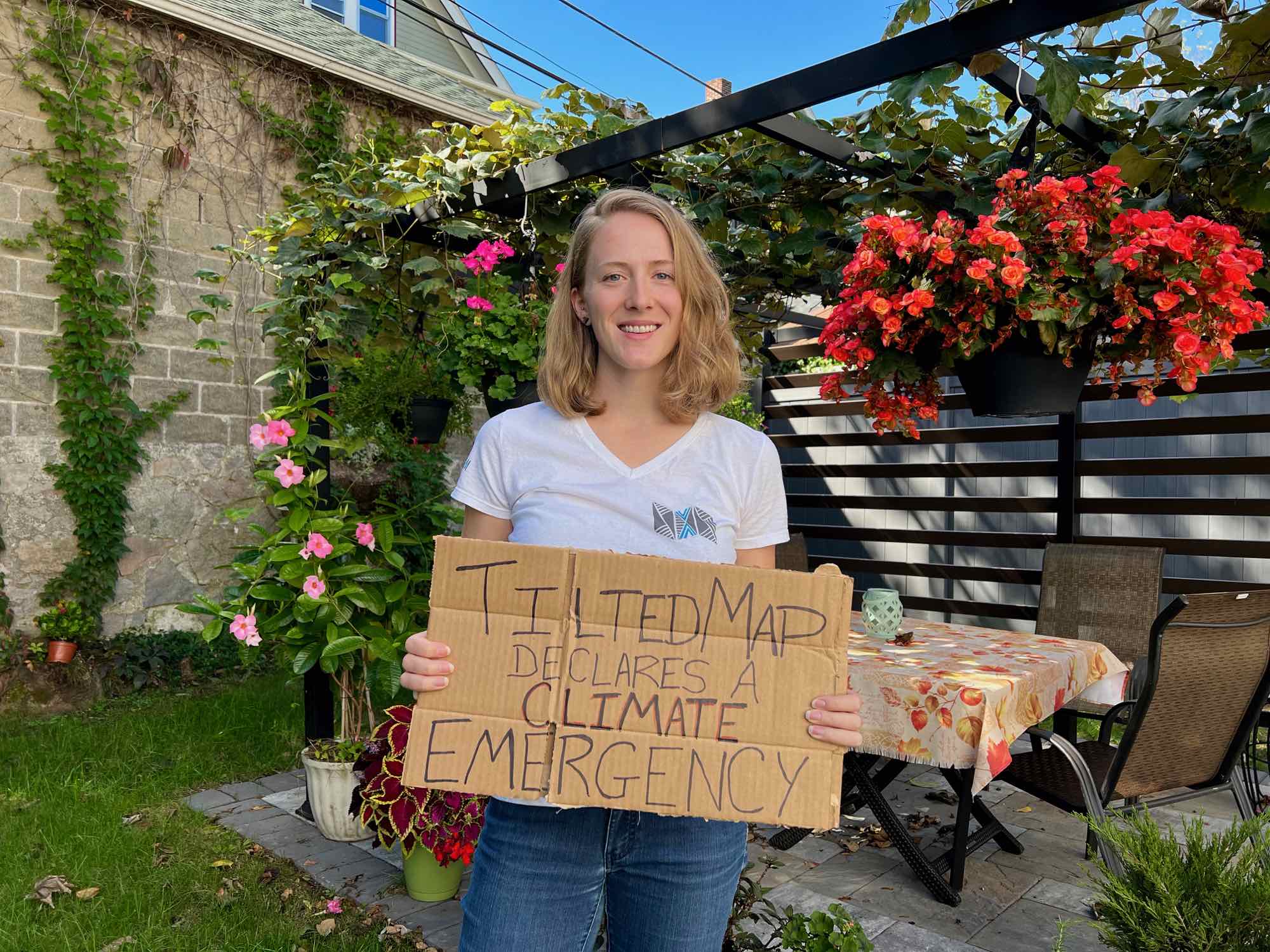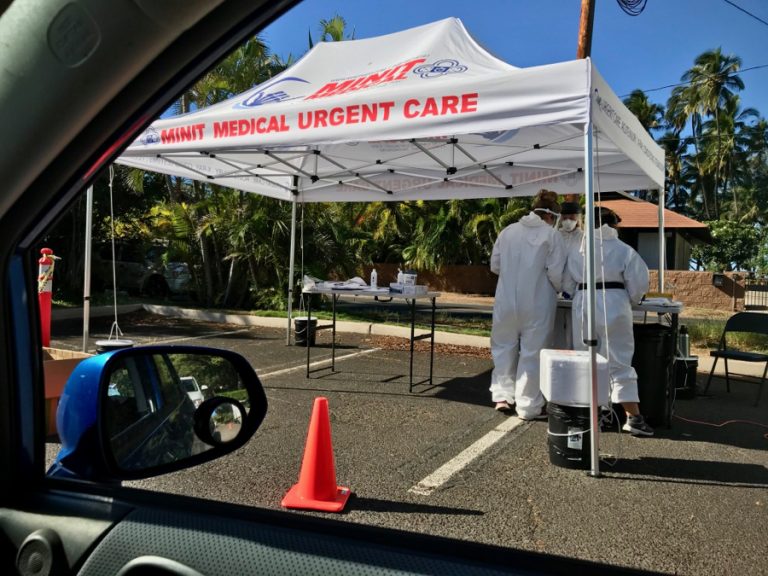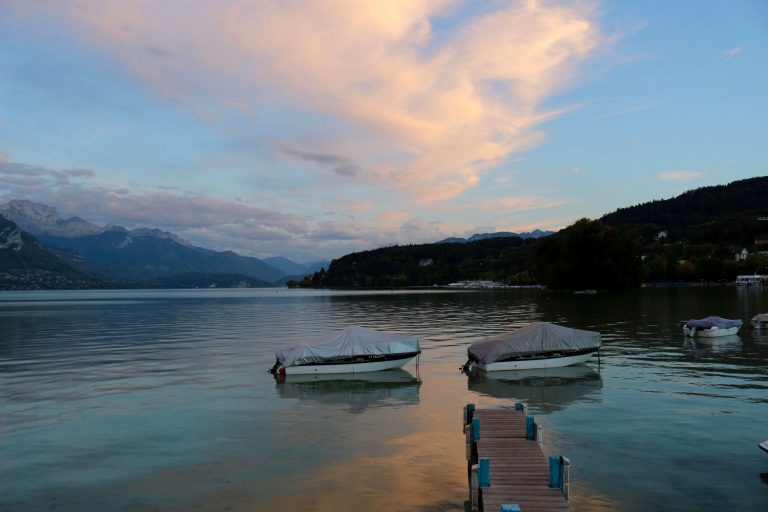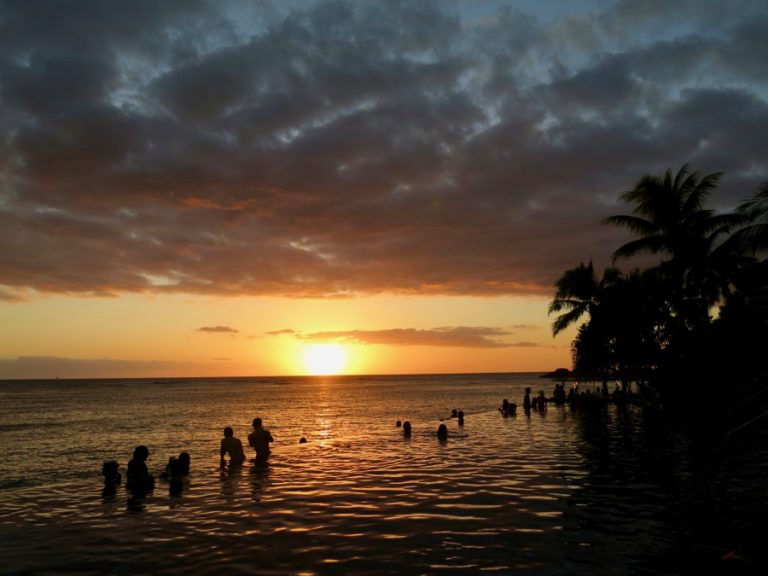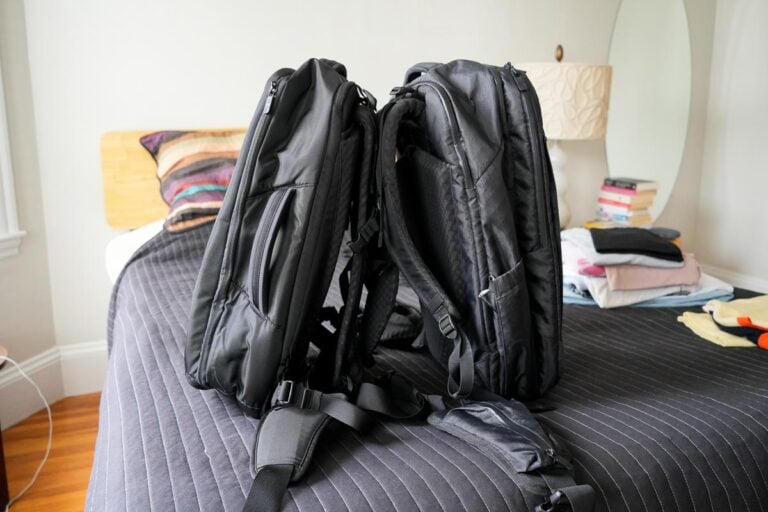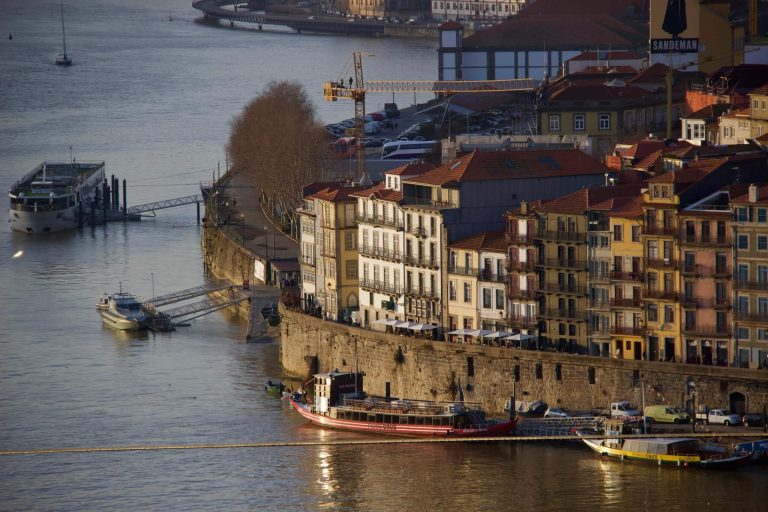This Travel Blog Declares a Climate Emergency [Part 1: Wait, What?]
This is the first article in what will be a multi-part series about understanding, calculating and reducing the carbon emissions of travel. (Here’s Part 2 – about calculating my carbon emissions from flights in 2022.)
I have some big news from this little travel and sustainability blog: Tilted Map is declaring a climate emergency.
What does it even mean for a travel blog to declare a climate emergency?
Tilted Map is joining (so far) 324 other sustainable travel businesses in a community called Tourism Declares A Climate Emergency. It’s an initiative that helps travel businesses talk about climate change and take real action toward stopping it.
Don’t worry, this post isn’t about explaining the science of climate change, or pointing out, yet again, that we can see it in 100-year floods, storms and receding glaciers.
This is about what to actually do about it. After all, having a plan is a big part of what Tourism Declares is all about.
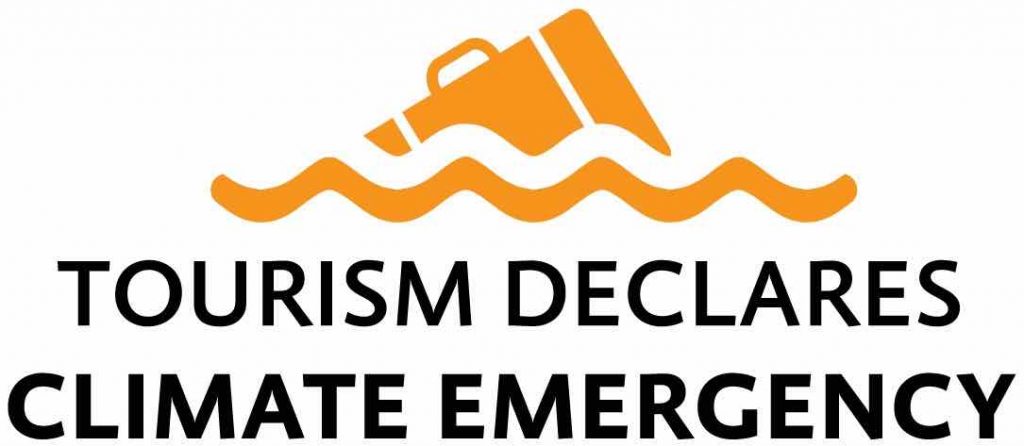
Before I get to what the official declaration means, I want to point out two quick things about travel and climate change. First:
Yes, we all know travel has a huge impact on climate change.
It’s important not to minimize the impact of travel on climate change (and on every other kind of environmental degradation), even though it’s a pretty awkward fact when you love to travel.
You might have heard the statistic that air travel “only” (as it’s sometimes framed) contributes 2 or 3% of global greenhouse gas emissions. It’s often used as a kind of excuse for why travel isn’t that bad for climate change, in the grand scheme of things.
(Yet flying might be the cause of more like 5% of climate change, for complex reasons like that the height in the atmosphere increasing the warming potential of emissions there.)
But that’s still not the point. Apart from the fact that being a small-ish part of a huge, existential problem shouldn’t be much of a consolation, the 3%, 2% or 5% idea is just a woefully incomplete statistic.
Why?
Because carbon emissions from travel come from far more than just flights!
Think: Traveling to the tropics and then cranking the AC.
Getting your sheets washed way more often than you do at home.
Food and alcohol production (and probably consuming more of those than you do at home, too.)
All the stuff we buy for travel.
Plus, every other kind of transportation involved in a trip besides the flight.
That’s why 8% of global GHG emissions come from tourism.
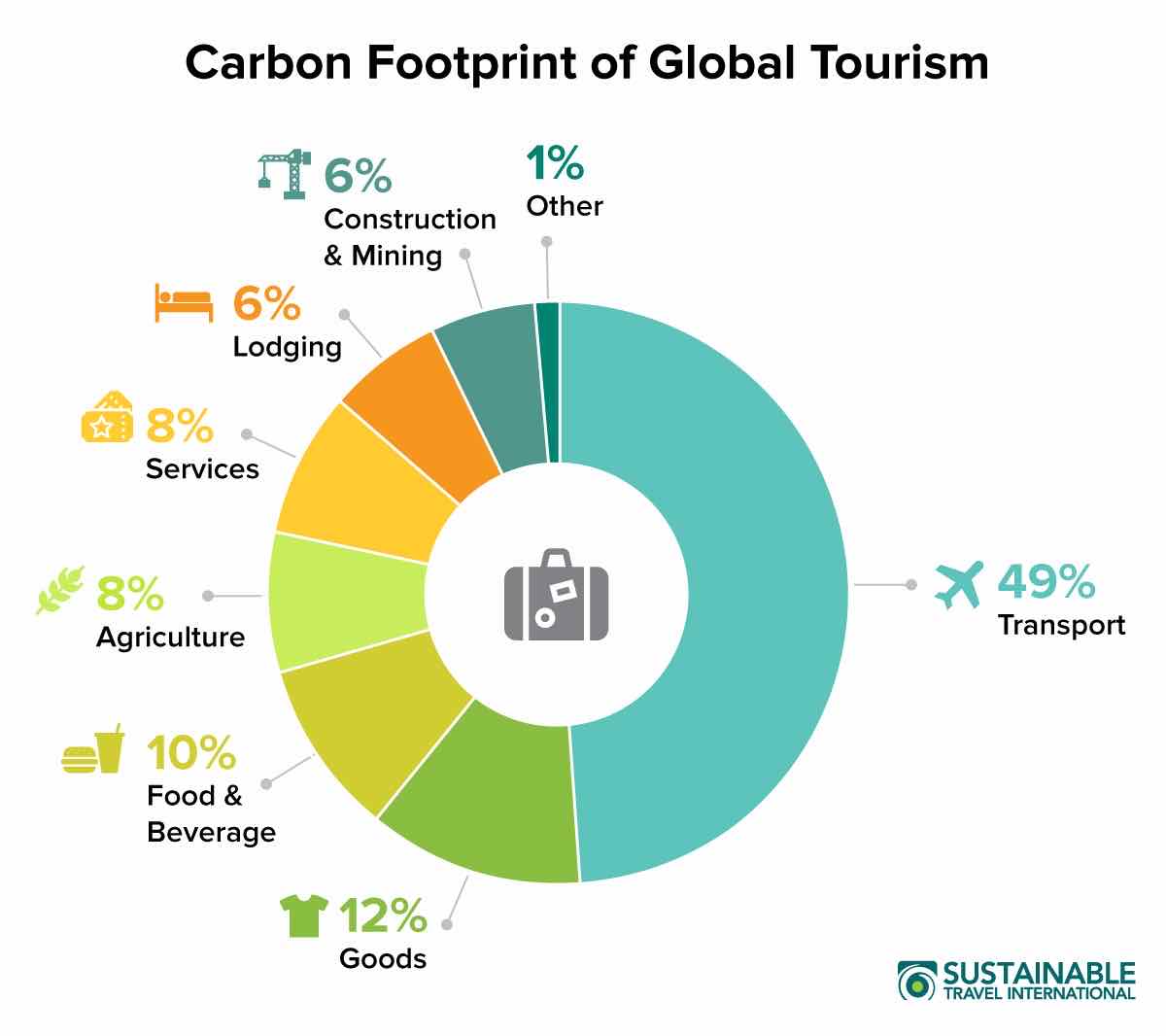
(This graph is from Sustainable Travel International.)
Second: Climate change has a huge impact on travel.
It’s not just the other way around.
And that means a lot to the 10% of people in the world whose jobs are linked to tourism. (More like 20% in tourism-heavy economies like Hawaii.)
So when you look at it from a point of pure self-interest, it also means a lot to people like me (and probably you) who just love to travel.
Climate change is making everything from insurance to food more expensive. That means travel businesses are already raising prices, and travel will become more expensive for travelers and less accessible.
And that means destinations will disappear, as extreme weather and natural disasters make more places less safe or comfortable to visit. (The longer and more extreme the hurricane season gets, the less tourism money will make it to the Caribbean. And who wants to plan a summer trip to California or Vancouver when it’s guaranteed to be choked with wildfire smoke?)
Travel contributes to climate change, but climate change also impacts travel. So instead of feeling bad about loving to travel, I want to focus on finding ways to do it better.
So what are we doing?
Joining Tourism Declares means I’m signing up for a Five-Step plan.
Step One: I have one year to come up with a Climate Action Plan based on the IPCC‘s current advice.
(Actually, technically, they say my Climate Action Plan needs to be “Adopted by my executive board within 12 months of my initial declaration,” so I guess I’ll have to pick out some board members. Mom?)
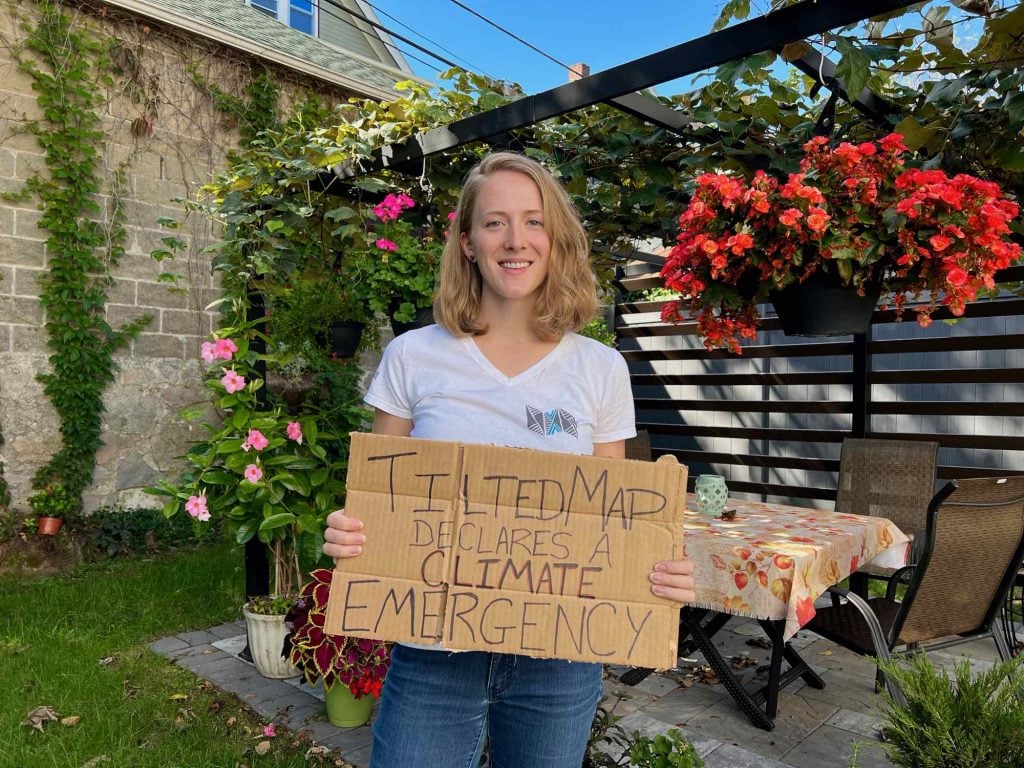
Anyway, the IPCC says we need to cut global carbon emissions to 55% below 2017 levels by 2030. That’s if we’re going to limit global warming to 1.5 degrees Celsius.
(The IPCC is the Intergovernmental Panel on Climate Change – the UN’s body for assessing scientific research on climate change. Basically the ultimate authority on all things climate.)
Translation: I have one year to figure out how I’ll cut my carbon emissions to 55% less than whatever they were in 2017.
Honestly, just that first step is a little intimidating, and I don’t even know if it’s possible yet.
So my first step is calculating my 2017 GHG emissions for the very small business that is Tilted Map. That includes all the obvious things, like flights and hotels, and shipping products to my door for my reviews, as well as the less obvious ones. (Like the energy required to run the servers that host this website, and to keep my computer screen on for all the hours I spend working in front of it. And probably lots of other things I haven’t thought of yet.)
That’s Step One. And I’m exhausted just thinking about it.
Technical Update: These steps are based on Tourism Declares’ original declaration framework. They’ve since changed the wording a bit to align with the Glasgow Declaration. (A commitment launched at COP26, in November 2021, for “a decade of climate action in tourism.” Tilted Map is a signatory and launch partner of that one, too!)
Anyway, you might see slightly different terminology regarding emissions reductions goals and measurements now from Tourism Declares, but the substance is the same.
Sustainable Travel Inspiration
I went to a great (virtual) conference in September. It was the annual event from the Center For Responsible Travel, or CREST. This year they did their event in collaboration with Tourism Declares.
One of the speakers at the conference was Janie Neumann, the Sustainable Tourism Manager at Visit Scotland. (The official Scottish tourism board is a founding member of the Glasgow Declaration, which is another major indicator of the travel industry taking a stand on climate.)
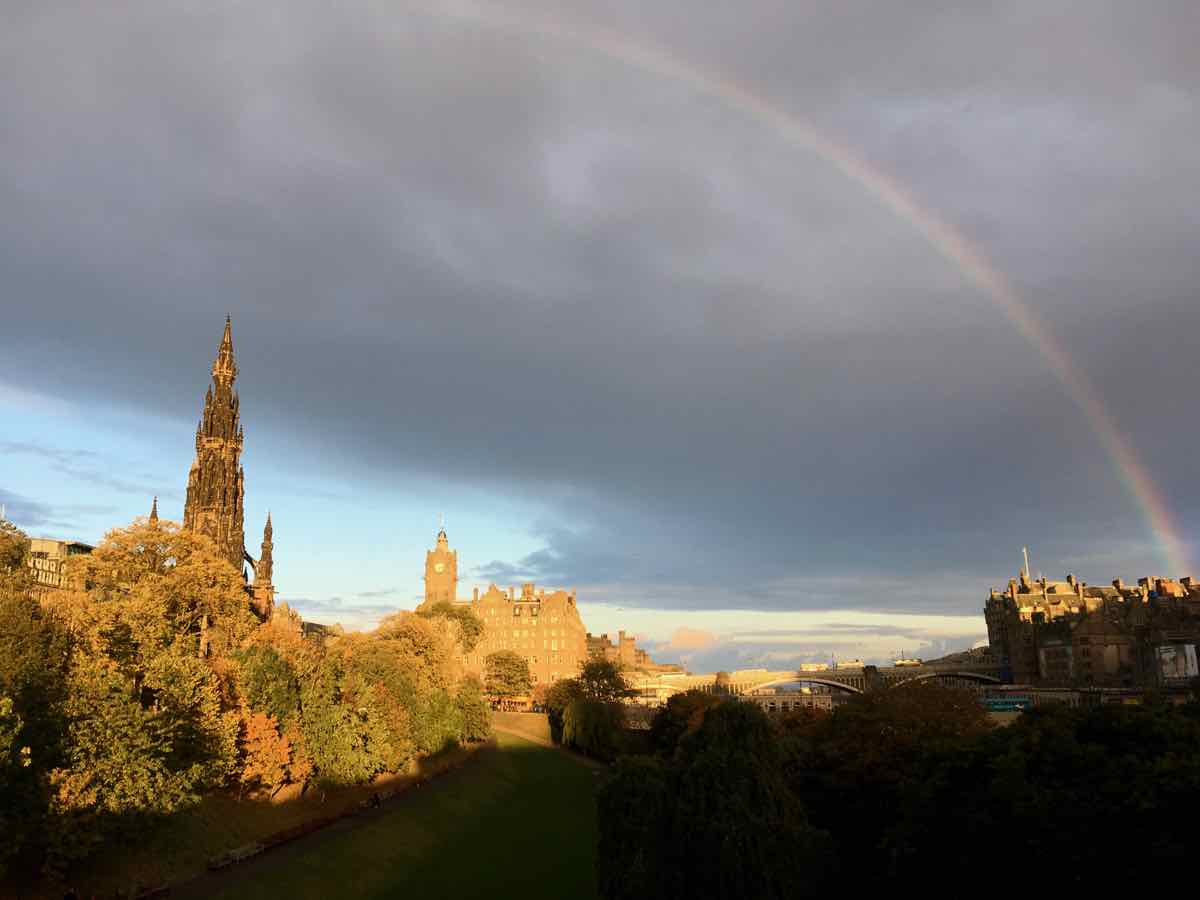
Janie said they’re getting people on board with Scotland’s climate goals by sharing three steps: “Target, measure, act.”
And I know it’s nerdy, but Janie’s words reminded me of a famous maxim I learned in sustainable business school:
“What gets measured gets managed.”
(From Peter Drucker, a management guru from Vienna who basically invented modern business management theory. I swear I have a point here.)
What Peter meant, as I understand it, is that we’re not going to make any progress if we don’t have data that explains where we are and where we need to go.
Next Steps
So right now, I’m at Janie’s “targeting” phase – meaning I’ve made my goal. (To somehow meaningfully reduce my carbon emissions.)
My “measuring” phase will be calculating all my emissions from flights and computer servers and the like.
I’m planning to use carbon calculator tools, like this one from Sustainable Travel International, to muddle my way through the measurement phase.
And of course, I’ll share details of how it’s going here on the blog and on my Instagram. (That’s Step Two of the requirements for Tourism Declares A Climate Emergency – communicate.)
Once I know what I’m looking at, it’ll be time to act.
I’ll need to take a good, hard look at what I can change to actually reduce my emissions – without giving up travel. (That’s Step Three – CUT EMISSIONS.)
Hopefully, it won’t be too painful.
They can have my one hamburger every six months if I can keep my twice-a-year flights to Europe?
I’m already bargaining, which I’m pretty sure is an act of desperation, and somehow I don’t think it’ll be that easy.
The final two steps in the declaration process are working together and advocating for change. I should “encourage suppliers and partners” to also declare a climate emergency, and “share best practice amongst peers.”
(Dear Travel Industry Peers, please help! If you have any best practices to share, I’m all ears. XO, Ketti)
And both of those steps include you, too, Dear Readers! (As well as other travel businesses I work with.) But you are my suppliers of motivation and my partners in change.
I’ll be sharing what I learn throughout this process about how to calculate my own climate impact, which pieces of it are the most significant, and how I can reduce them. And I encourage you to join me!
You can follow along and go through the same process I’m about to embark upon, even if you’re “just one person.”
We’ll figure it out together.
If you’re not a business and not in the travel industry, you can encourage your school, college, employer, and local government to declare a climate emergency. (More than 2,000 jurisdictions around the world already have.)
And you can support businesses – in travel and in everything else – that are doing something similar.
And if you are a travel business, I definitely encourage you to sign up with Tourism Declares, get your numbers calculated, and join us officially!
On the blog side, I’ll now only be promoting sustainable travel businesses & destinations, just as I only review sustainable products. (That’s been pretty much the case for a couple of years, but now I’m making it official.)
The list of Tourism Declares signatories will be one part of how I filter for sustainable travel companies to write about and sustainable destinations to visit.
After all, even if none of us really know what we’re doing yet, it’s okay. It’s a process. We’re learning and we’re all in this together.
Questions? Thoughts? Leave them below in the comments and I’ll be in touch!
